Naomi Osaka keeps losing — so why does Nike keep dressing her like a star?
How the legacy brand is lacking style icons and losing its footing in tennis fashion
Disclaimer this isn’t a diss post against Naomi Osaka. I love Osaka’s story and have been a long time supporter. Please read the full post before coming at me!
On the second day of the 2025 French Open, Naomi Osaka walked out onto the court debuting a custom-designed Nike kit inspired by the Japanese cherry blossom—a.k.a sakura. On her feet, she wore the Naomi Osaka x Nike GP Challenge 1 “Pink Foam” tennis shoes. To top it off, she accessorized the look with a pink visor and matching sakura-themed nail art.
Even though Osaka lost to No. 10 Paula Badosa in an unlucky first-round draw, her outfit will go down as one of the classic Nike collaborations—a tradition Nike has with transcendent and legendary players like Serena Williams, Andre Agassi, Roger Federer, Rafael Nadal, and so on.
Osaka was a promising young player, winning four majors before taking a mental health break in 2023. Now 27, Osaka hasn’t been able to be a top competitor as she often loses in the early rounds tournaments and consistently fails to win big matches. In the match against Badosa (another Nike athlete) alone, Osaka committed 54 unforced errors, was broken five times, and committed many double faults to lose the match in three sets.
Yet, Nike is still investing in Osaka, launching signature apparel lines and granting her creative input into designs.
It begs the question: why does a humongous sports brand give so much attention to one player who can barely crack the top 50?
Nike loves transformative, rule-breaking athletes
If you’re not Naomi Osaka, or in other words, the 50 or so Nike athletes on the roster—including the men’s No. 1 Jannik Sinner and No. 2 Carlos Alcaraz and the women’s No. 1 Aryna Sabalenka—you won’t have a custom-designed Nike kit.
Even Sinner, who had a $150m 10-year deal and Alcaraz who recently extended his deal with with Nike (which includes a custom logo in the future) will be wearing a templated design for Roland Garros. You can even buy Sinner and Alcaraz’s kit at Tennis Warehouse.
Outfitting a large Nike team with custom designs for each player might be logistically and monetarily difficult. So what makes a player the face of Nike tennis fashion? How do you break free from templated designs?
To be a global fashion icon, you must have a strong narrative
Serena Williams is a once-in-a-lifetime athlete that broke boundaries in tennis. She helped Nike tell deeper stories about sport, identity, womanhood, and legacy. Federer turned tennis into an art form. Agassi was the “anti-tennis club” star. More recently, Nick Kyrgios is another star who pushes tennis style, being anti-establishment and having an untraditional playing style. All of these icons transformed the sport off the court—not just won tournaments.
When Naomi Osaka was 20 years old, she beat Serena Williams at the 2018 U.S. Open ushering in a new era in tennis. By the time she was 23, she won four grand slams proving she could be the next big tennis star. But Osaka didn’t just win on the court, she spoke up about her battles in her personal life with mental health and advocated for social justice proving to many she was authentic and relatable. Nike loves authenticity while appealing to a wide multi-cultural audience. Osaka relinquished her U.S. citizenship and represented Japan in the 2020 Olympics showing she values her parental heritage, an aspect she brings into her fashion.
There’s still a great interest in Osaka as is a household name compared to emerging players. With Nike sponsorships, there seems to be a tiered system when it comes to sponsorships based on awareness, likeness and interest level.
According to SponsorPulse data Osaka “shows an awareness level of 56%, Likeness at 57%, and a remarkable level of Interest at 37%. These numbers are comparable to those of massive sports superstars, such as Lamar Jackson, Aaron Rodgers, Anthony Davis, and Cristiano Ronaldo.”
Osaka represents the first tier of Nike athletes who are global icons and receives star treatment with ad campaigns, custom outfits, etc. The second tier are players like Sabalenka, Sinner, and Alcaraz who are emerging, but still need to develop that global appeal—thus being banished to templated designs, for now.
The young Nike athletes are lacking a strong narrative
Young stars like Sabalenka, Sinner, and Alcaraz are still developing their narrative and marketability. In the past year Sinner and Alcaraz have solidified their place in the new order of tennis, however, a large part of their story is still unwritten.
A large amount of fans believe Alcaraz is the new Nadal. Sinner is the lanky and stoic robot. Sabalenka has “tiger mentality” but still needs to prove she’s consistent in the long term.
With regards to fashion, these stars haven’t established themselves in an innovative way. They each have partnerships with luxury brands (Loewe, Gucci, Louis Vuitton), but fail to have that authentic “I-dressed-myself look.” Each seem to lack authenticity in the fashion department, contrasting to players like Osaka and Kyrgios.
Stories drive fashion design
Because of Osaka’s strong personal narrative, she’s able to create authentic fashion looks and develop a distinct style. Her looks like the 2025 Indian Well’s kit, which she debuted new shoes with Koi fish on them, nod to her Japanese heritage and mentality. She lost in the first round to an unranked player by the way.
Similarly, Kyrgios adopted the “Just Do You” ethos and capitalized on his rebellious spirit to harvest a fruitful long-term relationship with Nike. He has a signature look and style to his kits, reminiscent of basketball jerseys—a sport he draws inspiration from.
Both have able to tell her personal story through fashion in a way younger Nike athletes haven’t been able to do yet.
Smaller brands don’t have as many icons, but still have an advantage
While Nike is lacking icons these days, other brands are starting to be competitive in tennis by being more agile, collaborative, and culturally relevant by appealing to common trends seen in street style or luxury fashion.
Brands like New Balance, Asics, and On have much smaller teams than Nike which allows them to pay more attention to their young athletes and explore new designs more often.
We’ve seen New Balance try so many looks in the past few years like neon, trucker hats, shoe silhouettes, and most recently, a Miu Miu collab shepherded by Coco Gauff. To me, New Balance is far and ahead of Nike taking risks and generally incorporating streetwear into their kits to reach more niche audiences quickly.
Asics is another brand that has recently captured stars like Alex de Minaur, Novak Djokovic, Matteo Berrettini, Lorenzo Musetti, Taylor Fritz, Jasmine Paolini, and Ons Jabeur. With a recent collaboration with A.P.C., the brand shows a bright new future in streetwear collaborations and even allowed multiple players to sport this new line rather than a few reaping the benefits of a collab (cough, cough @ Nike).
Lastly, On is another forward-thinking brand that can be a real competitor to Nike in the future. The brand has introduced a new gradient and performance wear look with different materials and show silhouettes not seen in modern tennis. On is gaining cultural relevance with highly visible marketing campaigns with Zendaya and Fka Twigs as well as their activation events like Clubhouse Nights.
Players want more control over what they wear on court
Another factor causing Nike losing ground in tennis fashion is brands popping up on all sides to steal athletes and offer them more creative control.
Recently, newer brands (to tennis wear) like Hugo Boss and Lululemon have swayed players like Taylor Fritz and Francis Tiafoe to join their teams and take a bigger part as brand ambassadors and lead athletes.
Tiafoe, for instance, was with Nike for nine years before departing the brand for Lululemon and K-Swiss—smaller brands with a smaller footing in the tennis world. However, at lululemon, Tiafoe had the ability to be the leading male athlete and have more creative control over his kits therefore expanding his personal brand.
“I’m really excited to wear Lululemon on the court,” Tiafoe told Forbes. “I got to give a lot of input into my look, which feels very me and shows off my style.”
Tiafoe was a huge loss for Nike in my humble opinion, as he embodies the brand’s marketing principles: strong conquer-all narrative coming from an immigrant family, he’s bold and expressive with his fashion and play-style on the court showing potential to break the traditional tennis mold and push the sport forward.
Other athletes like Andrey Rublev and Donna Vekić left Nike to create their own brand and have full-creative control of their on-court fashion and deeper reflect their personal values. Before he retired, Roger Federer also left Nike for Uniqlo to gain back control of his “RF” logo and explore new footwear deals—which he later signed with On.
Nike just isn’t giving the same creative attention to tennis
Compared to the 1990s and early 2000s, Nike tennis has been on auto-pilot. The designs have been stale and lacking any progression compared to competitors.
The argument can be made, Nike still sponsors a combined nine players in the WTA and ATP top 10, however, none of these athletes have the same caliber of cultural influence like past icons. These players wear the same templated kits and even play each other wearing similar outfits, tricking viewers into thinking their seeing double. Take the 2025 Indian Wells championships for example. Both the men’s and women’s finalists were Nike athletes, yet all wore the same outfits.
To me, this is a missed opportunity to allow each player to differentiate themselves on court and show off their personal style.
Where are all the Creative Directors?
Tennis brands don’t have traditional Creative Directors like fashion houses do, yet big brands employ guest creative directors to partner with players to create a line or two from time to time.
Nike likes working with Yoon Ahn who designs the custom looks for Osaka. Stella McCartney has designed kits for Caroline Wozniacki and Garbiñe Muguruza and Pharell Williams launched a tennis line for Adidas. Roger Federer also collaborated with UNIQLO’s Creative Director, Clare Waight Keller to create a #tenniscore line recently.
I believe Nike would benefit from a tennis Creative Director to compete with smaller tennis brands who can be agile and churn out collaborations like Asics and New Balance. This person can also be a liaison between the players and the brand to give players more creative control and a voice in the design process.
Nike’s business woes
A huge aspect to why Nike may be struggling is their decline in sales and stock price. This forces the brand to search for fast revenue streams outside of tennis and cut resources in all aspects of the business.
Tennis is a high-cost, low visibility sport compared to soccer, basketball, or running and with fewer global stars that guarantee global reach, the brand is probably re-strategizing their stake in tennis.
As mentioned before, they’ve cut several American tennis stars from the roster and are focusing on players with global appeal and a strong marketing narrative. Since their Nike Tennis team stretches wide and far compared to other brands, it’s expensive to outfit each sponsored player in custom gear.
They could be taking a “less is more” approach and honing in on young players with infinite potential to be global icons like Sinner, Alcaraz, and Sabalenka.
Players who’ve pushed the bounds of athletic fashion have been transformative players. To be a global icon, you must have significant cultural significance off the court and change fan’s perception of what tennis could be.
🎤 Shoutouts
⏮️ My Last Post: Je ne sais quoi
🤓 Suggested Read: French Open storylines: Nadal’s tribute, Swiatek’s record and line judges’ last stand
🤓 Suggested Read: Tennis Was Once Ruled by Teenagers. Now, Not So Much.
🤓 Suggested Read: Carlos Alcaraz wants to be a tennis serve bot. He has a long way to go





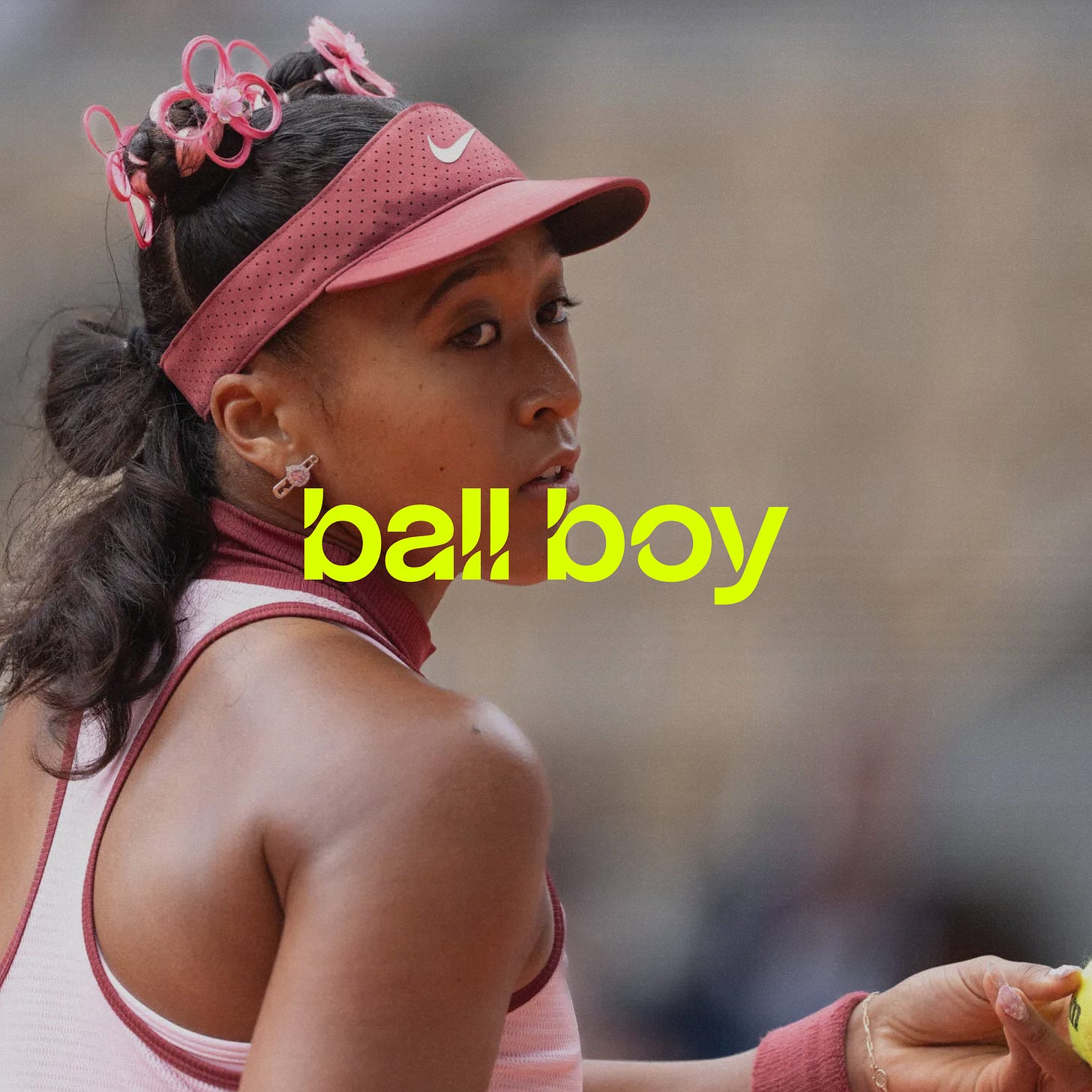
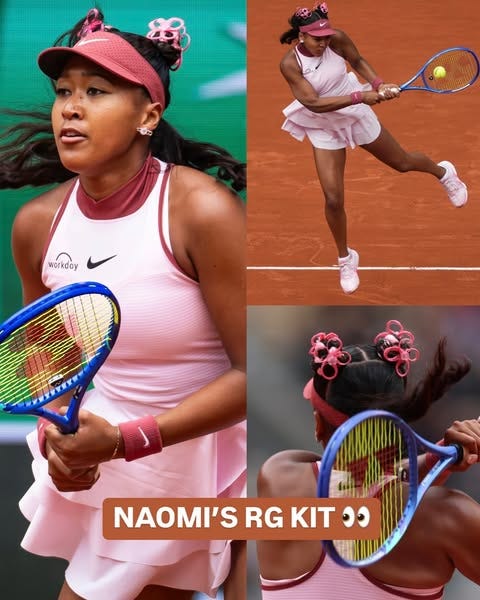
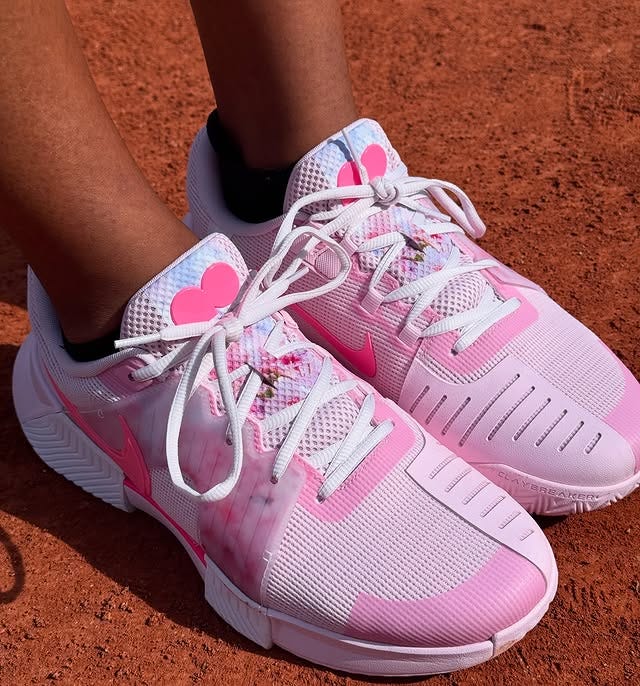

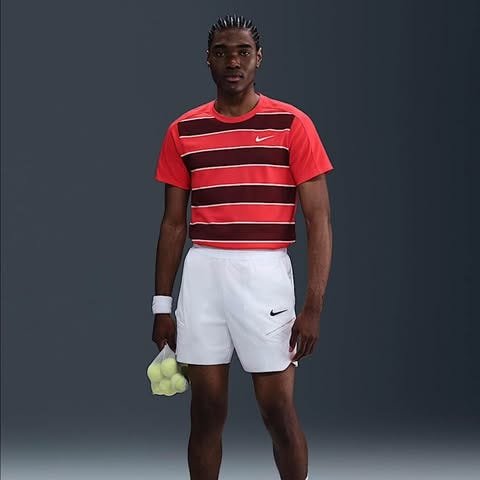
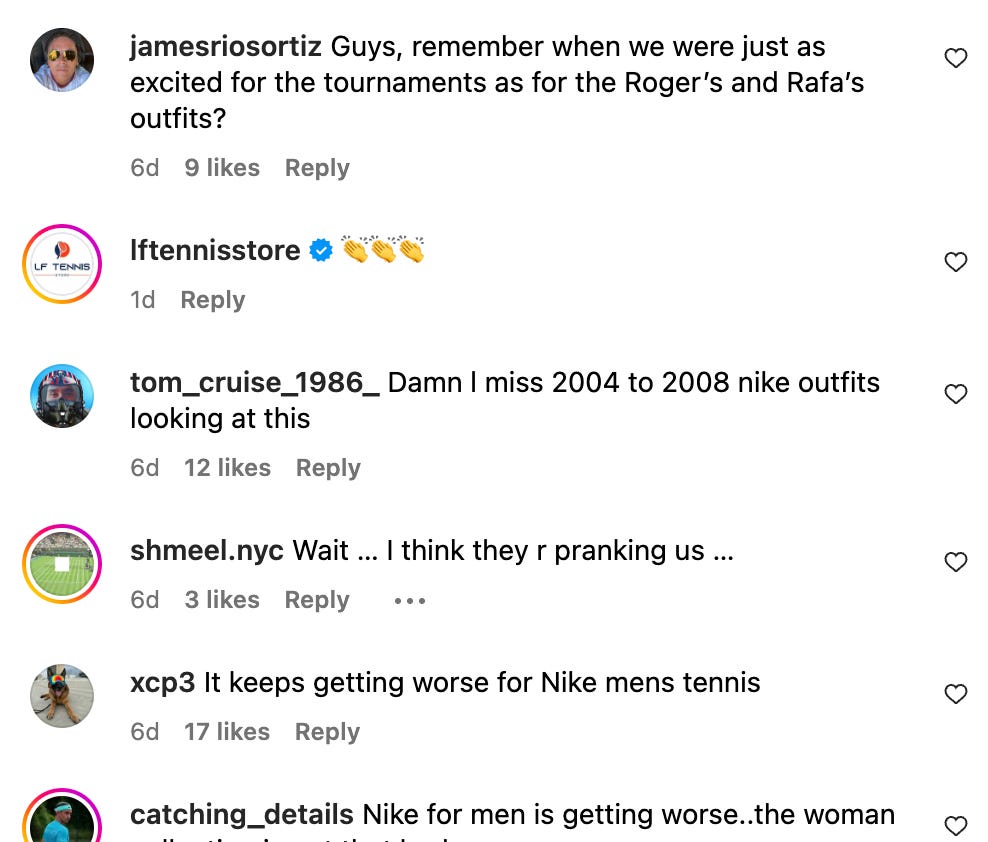
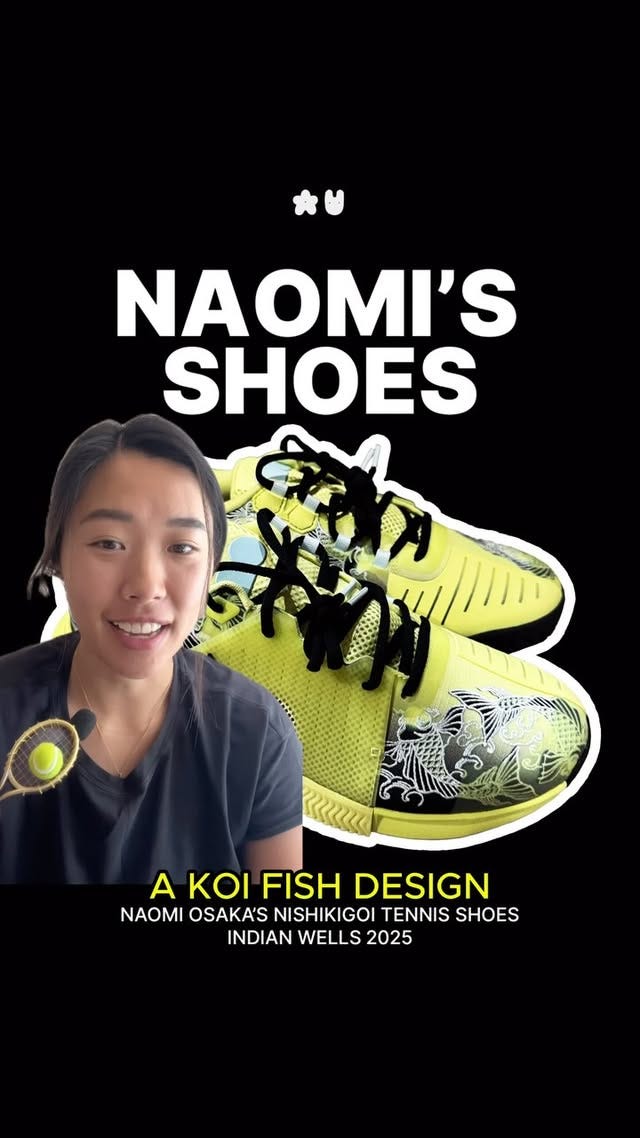
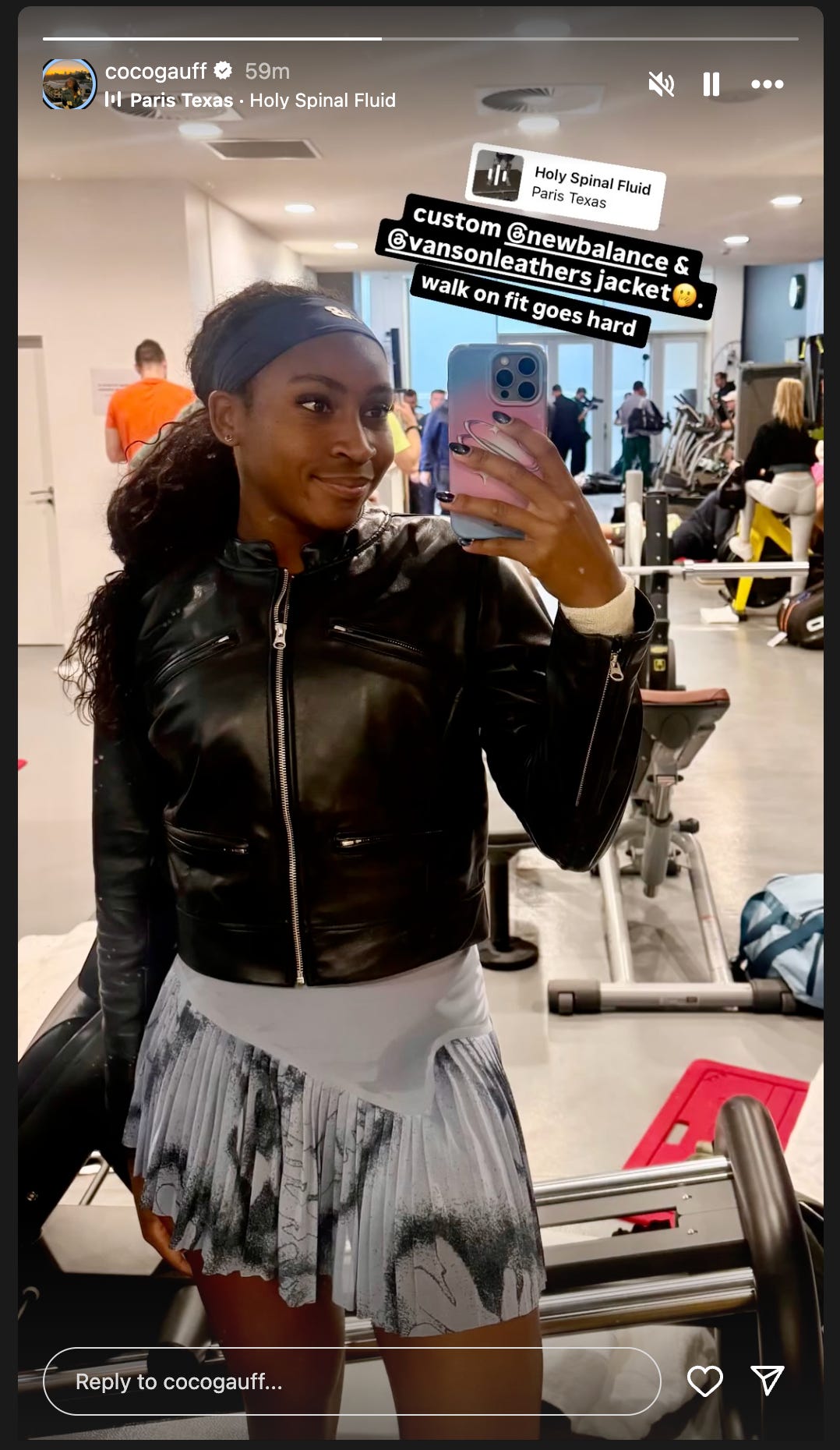
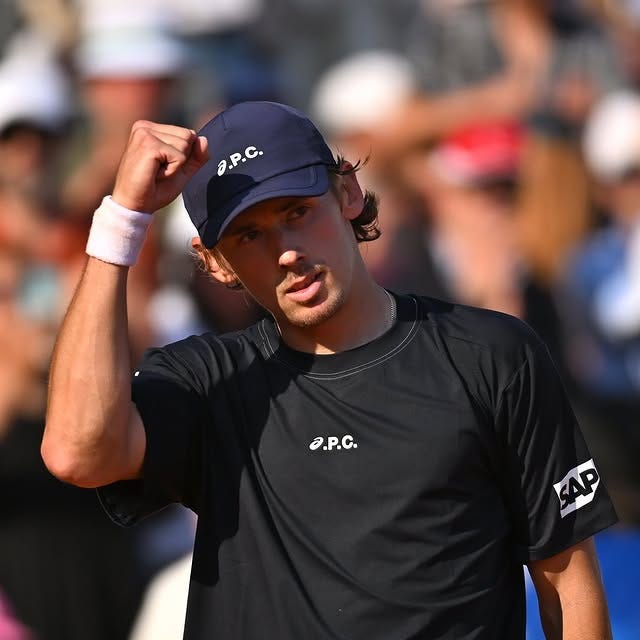
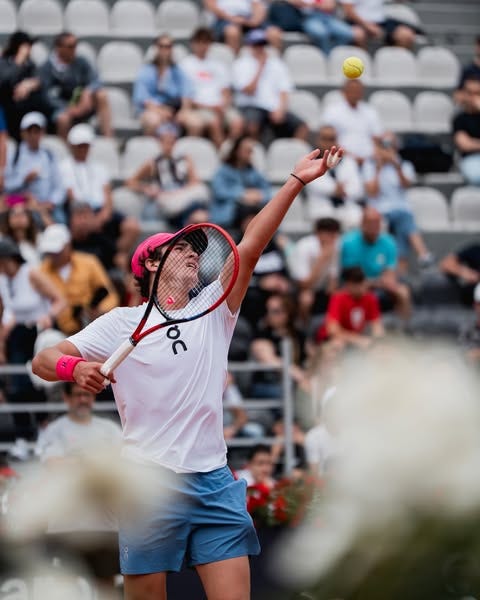

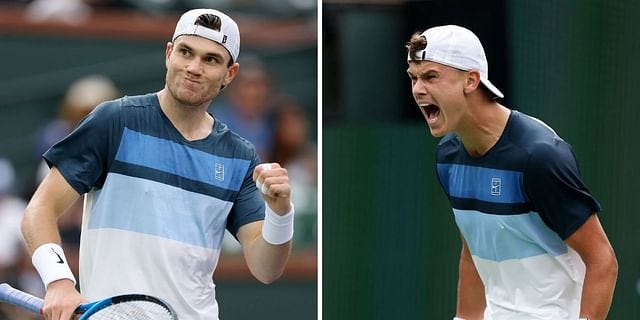
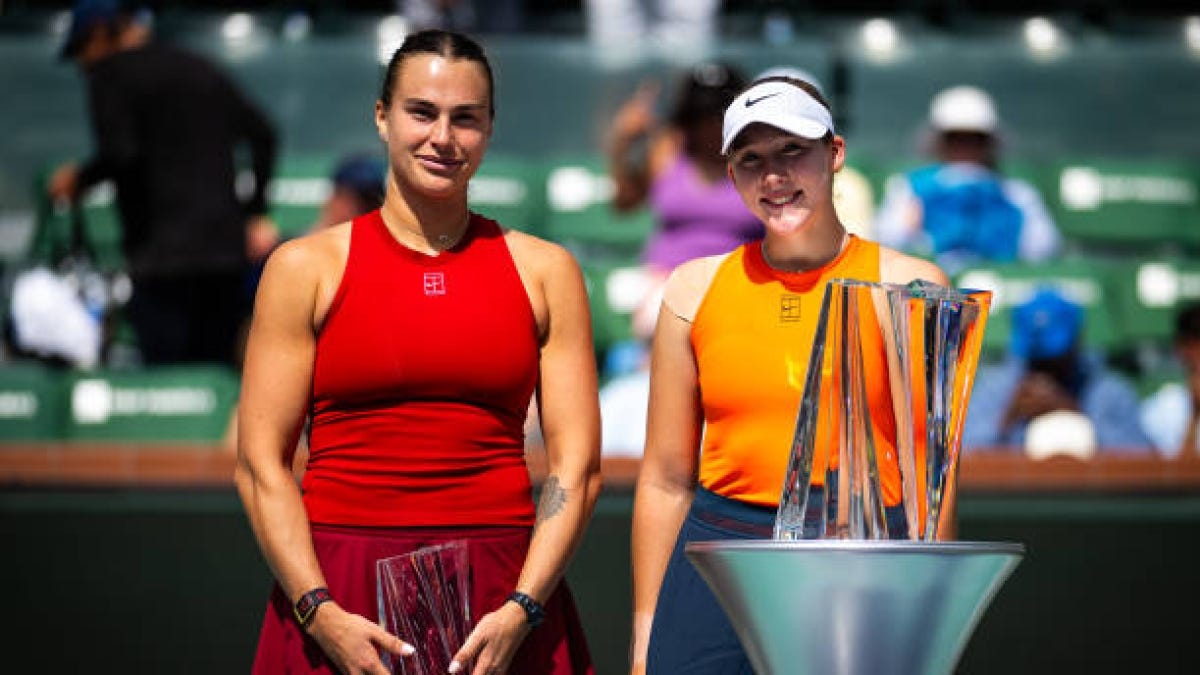
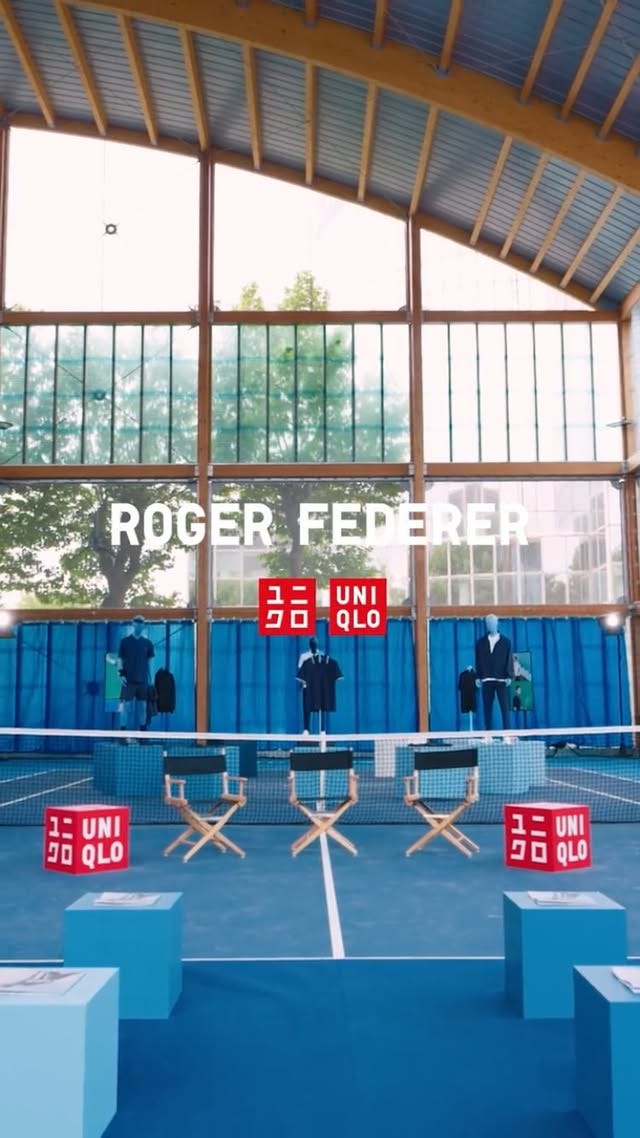
Hi! I would like to say that this was a wonderful essay. I am a huge tennis fan and I have always enjoyed reading about the marketing and business side of the game.
However, and please do not take this the wrong way, I have a critique of your essay regarding the next paragraph:
"Serena Williams is a once-in-a-lifetime athlete that broke boundaries in tennis. She helped Nike tell deeper stories about sport, identity, womanhood, and legacy. Federer turned tennis into an art form. Agassi was the “anti-tennis club” star. More recently, Nick Kyrgios is another star who pushes tennis style, being anti-establishment and having an untraditional playing style. All of these icons transformed the sport off the court—not just won tournaments."
First of all, I do not think 23 Grand Slam winner Serena Williams, 8 Grand Slam winner Agassi and 20 Grand Slam winner Federer are on the same level as no slam Kyrgios, whoose biggest achievment was a Wimbledom final he reached because Nadal withdrew. Following that event, a lack of discipline, injuries and bad attitude resulted in a dissapointing career.
Second of all, -and to be frank the reason I wrote this comment-Kyrgios is a man that pleaded guilty to assaulting his girlfriend. Is that the man you wish to call an icon? An abuser?
On top of that, he has made multiple comments disrespecting women's tennis and sexist remarks regarding his ex girlfriend Anna Kalinskaya when she briefly dated Sinner.
If anything, the way Kyrgios has transformed the game is by proving once again that the business of tennis does not give a fuck about employing abusers as long as it might be profitable.
ESPN gave him a buch of interviews to do. He was going insane about Sinner but still appeared on TV like nothing was going on. All of it bc he has a bad boy reputation that might bring ratings? Against the fear of seeming repetitive, this is a man that has assaulted his girlfriend and has not achieved much of consequence in this sport, is that really an icon?
Not much to add except that I thought Sinner’s t-shirt the other day was particularly ugly.